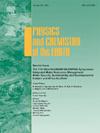Three parameter calculation method for dry rock modulus and its application in feasibility evaluation of time-lapse seismic in G oilfield
IF 3
3区 地球科学
Q2 GEOSCIENCES, MULTIDISCIPLINARY
引用次数: 0
Abstract
This study focuses on the offshore GE Oilfield with typical marine turbidite sandstone reservoirs and rich reserves. Improving production efficiency is crucial, and OBN-based TLS monitoring is the key means. However, the Macbeth method for calculating dry rock modulus in TLS rock physics theory has limited applicability. It's hard to accurately assess TLS performance in different porous reservoirs, severely restricting in-depth reservoir understanding. To address this issue, this study innovatively proposes a three-parameter dry rock modulus TP method that comprehensively considers porosity, density, and effective pressure, based on the petrophysical test data of 9 representative rock samples. Through rigorous comparative verification of data from low-, medium-, and high-porosity rock samples, the results show the TP method can be stably used under different porosity conditions, with broad universality and high prediction accuracy. It's incorporated into the Gassmann equation for G Oilfield TLS evaluation. A relational template of the CWI difference of 16 reservoir types considering porosity and shale content versus water saturation and pressure changes is constructed, and the corresponding changing laws are clarified. Meanwhile, factoring in bound water and residual oil saturation, a comparative analysis of TLS evaluations of four reservoir rock samples (R1, R2, R3, R4) is performed. It aims to assess the feasibility of TLS monitoring for each reservoir under different conditions, including maximum fluid replacement, single fluid replacement, and the combined impact of fluid replacement and pressure drop. The results will offer a more accurate and efficient method for G Oilfield's TLS monitoring, strongly supporting the enhancement of production efficiency.
干岩模量三参数计算方法及其在G油田时移地震可行性评价中的应用
以海上GE油田为研究对象,该油田具有典型的海相浊积砂岩储层,储量丰富。提高生产效率至关重要,而基于obn的TLS监控是关键手段。然而,在TLS岩石物理理论中计算干岩模量的麦克白方法适用性有限。很难准确评估不同多孔性储层的TLS性能,严重限制了对储层的深入了解。针对这一问题,本研究基于9个代表性岩样的岩石物理测试数据,创新性地提出了综合考虑孔隙度、密度和有效压力的三参数干岩模量TP方法。通过对低、中、高孔隙度岩样数据的严格对比验证,结果表明,TP方法在不同孔隙度条件下均能稳定应用,通用性广,预测精度高。将其纳入G油田TLS评价的Gassmann方程中。构建了考虑孔隙度、页岩含量与含水饱和度、压力变化的16种储层CWI差异关系模板,明确了相应的变化规律。同时,考虑束缚水和剩余油饱和度,对4个储层岩石样品(R1、R2、R3、R4)的TLS评价进行了对比分析。旨在评估在不同条件下对每个储层进行TLS监测的可行性,包括最大流体替换量、单一流体替换量以及流体替换和压降的综合影响。研究结果将为G油田的TLS监测提供更加准确、高效的方法,有力地支持了生产效率的提高。
本文章由计算机程序翻译,如有差异,请以英文原文为准。
求助全文
约1分钟内获得全文
求助全文
来源期刊

Physics and Chemistry of the Earth
地学-地球科学综合
CiteScore
5.40
自引率
2.70%
发文量
176
审稿时长
31.6 weeks
期刊介绍:
Physics and Chemistry of the Earth is an international interdisciplinary journal for the rapid publication of collections of refereed communications in separate thematic issues, either stemming from scientific meetings, or, especially compiled for the occasion. There is no restriction on the length of articles published in the journal. Physics and Chemistry of the Earth incorporates the separate Parts A, B and C which existed until the end of 2001.
Please note: the Editors are unable to consider submissions that are not invited or linked to a thematic issue. Please do not submit unsolicited papers.
The journal covers the following subject areas:
-Solid Earth and Geodesy:
(geology, geochemistry, tectonophysics, seismology, volcanology, palaeomagnetism and rock magnetism, electromagnetism and potential fields, marine and environmental geosciences as well as geodesy).
-Hydrology, Oceans and Atmosphere:
(hydrology and water resources research, engineering and management, oceanography and oceanic chemistry, shelf, sea, lake and river sciences, meteorology and atmospheric sciences incl. chemistry as well as climatology and glaciology).
-Solar-Terrestrial and Planetary Science:
(solar, heliospheric and solar-planetary sciences, geology, geophysics and atmospheric sciences of planets, satellites and small bodies as well as cosmochemistry and exobiology).
 求助内容:
求助内容: 应助结果提醒方式:
应助结果提醒方式:


